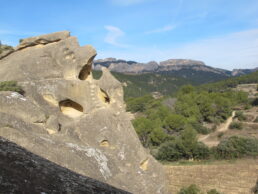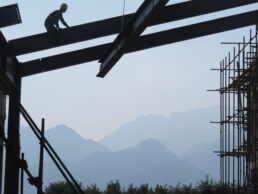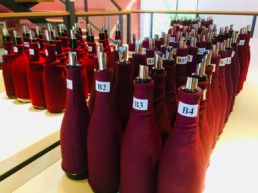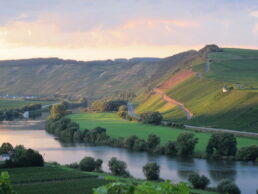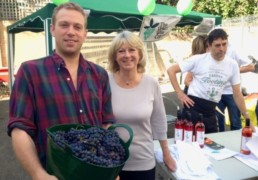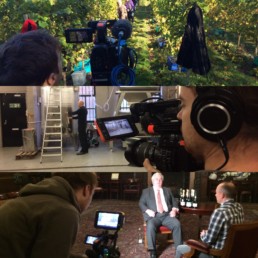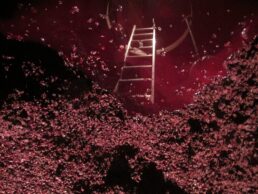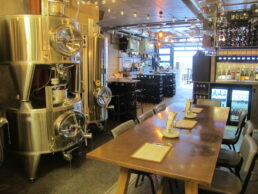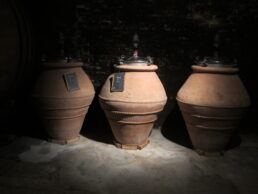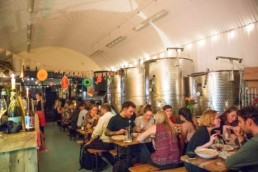Images of Beaumes de Venise, January 2019
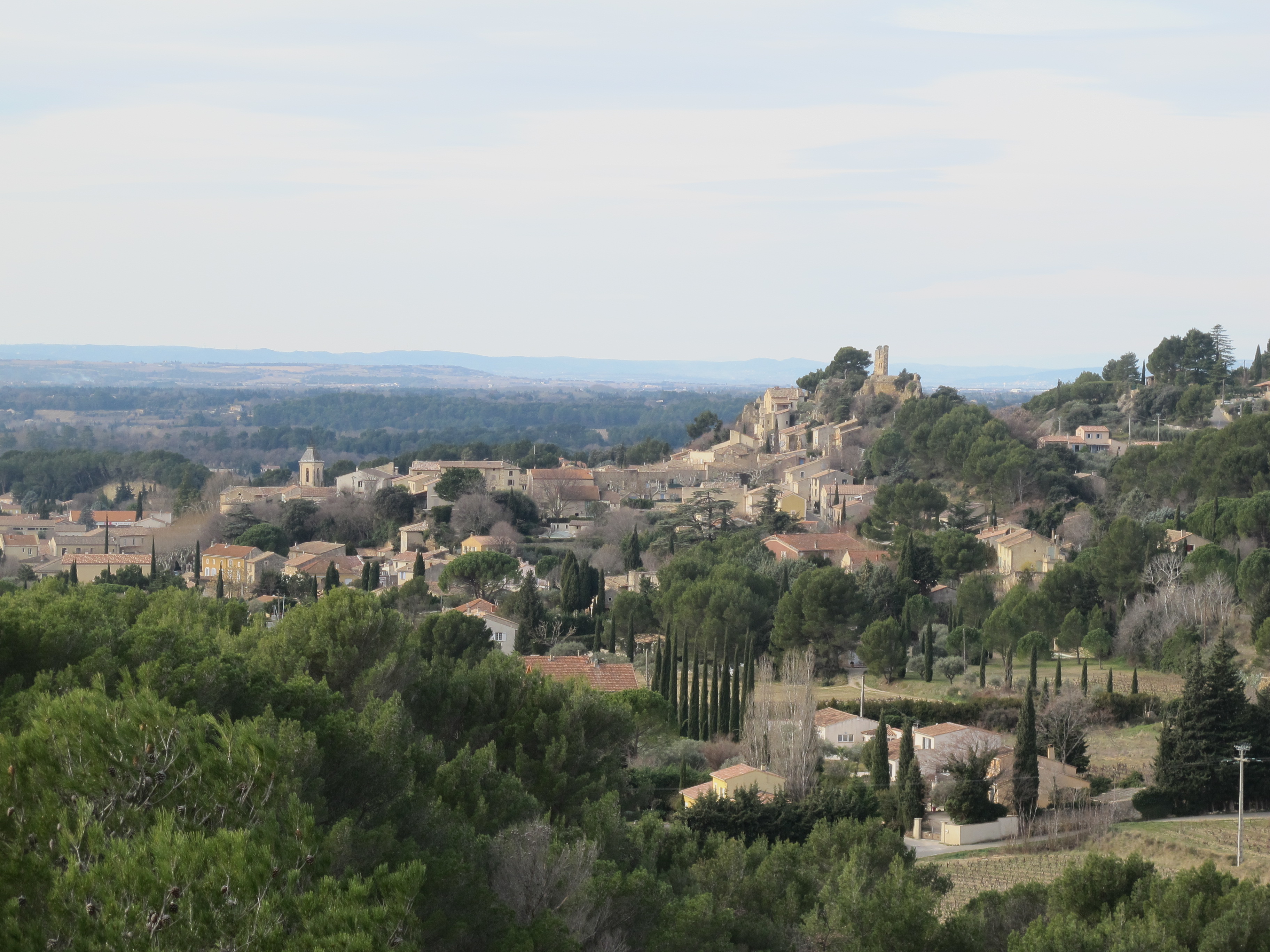
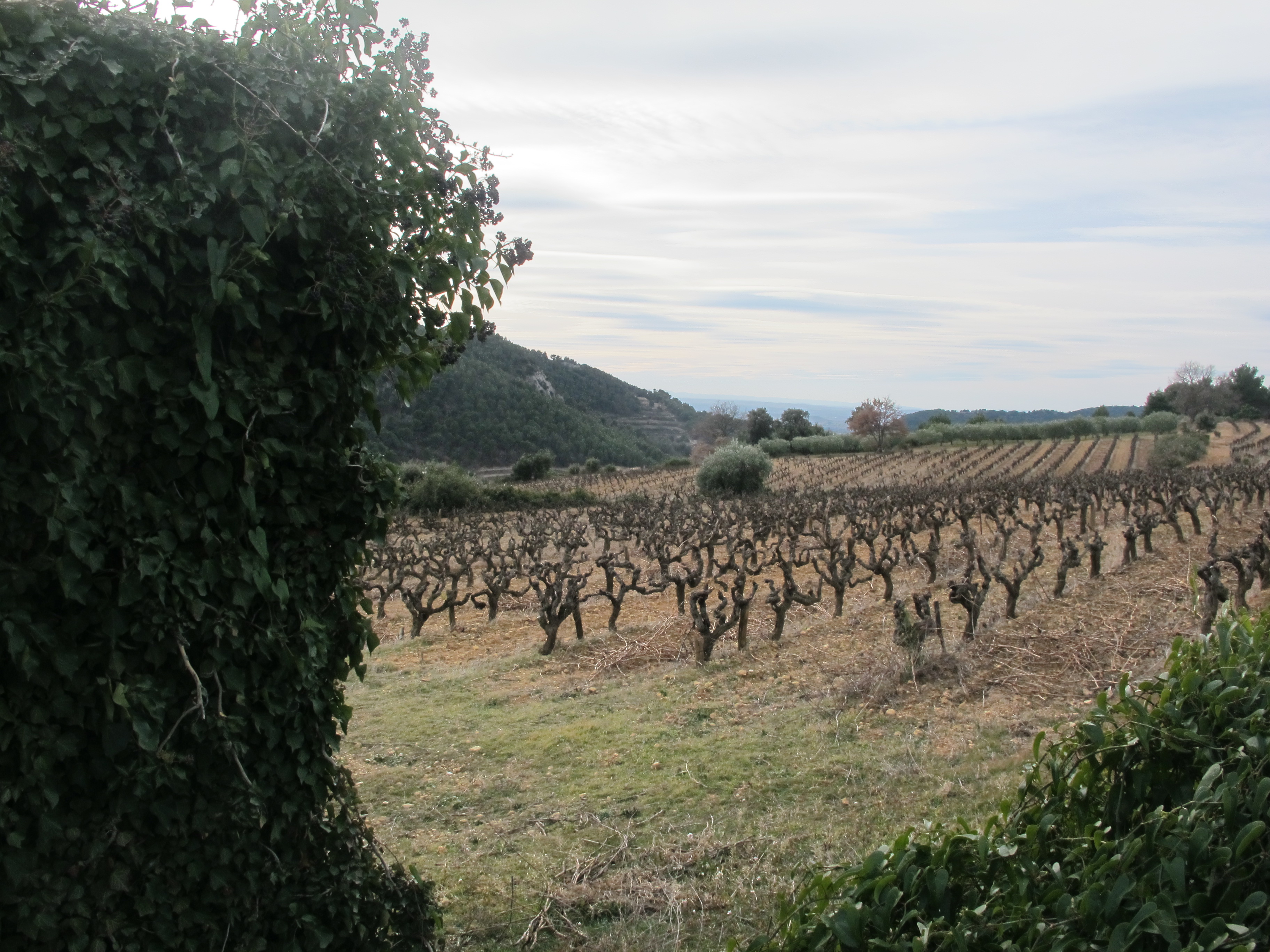
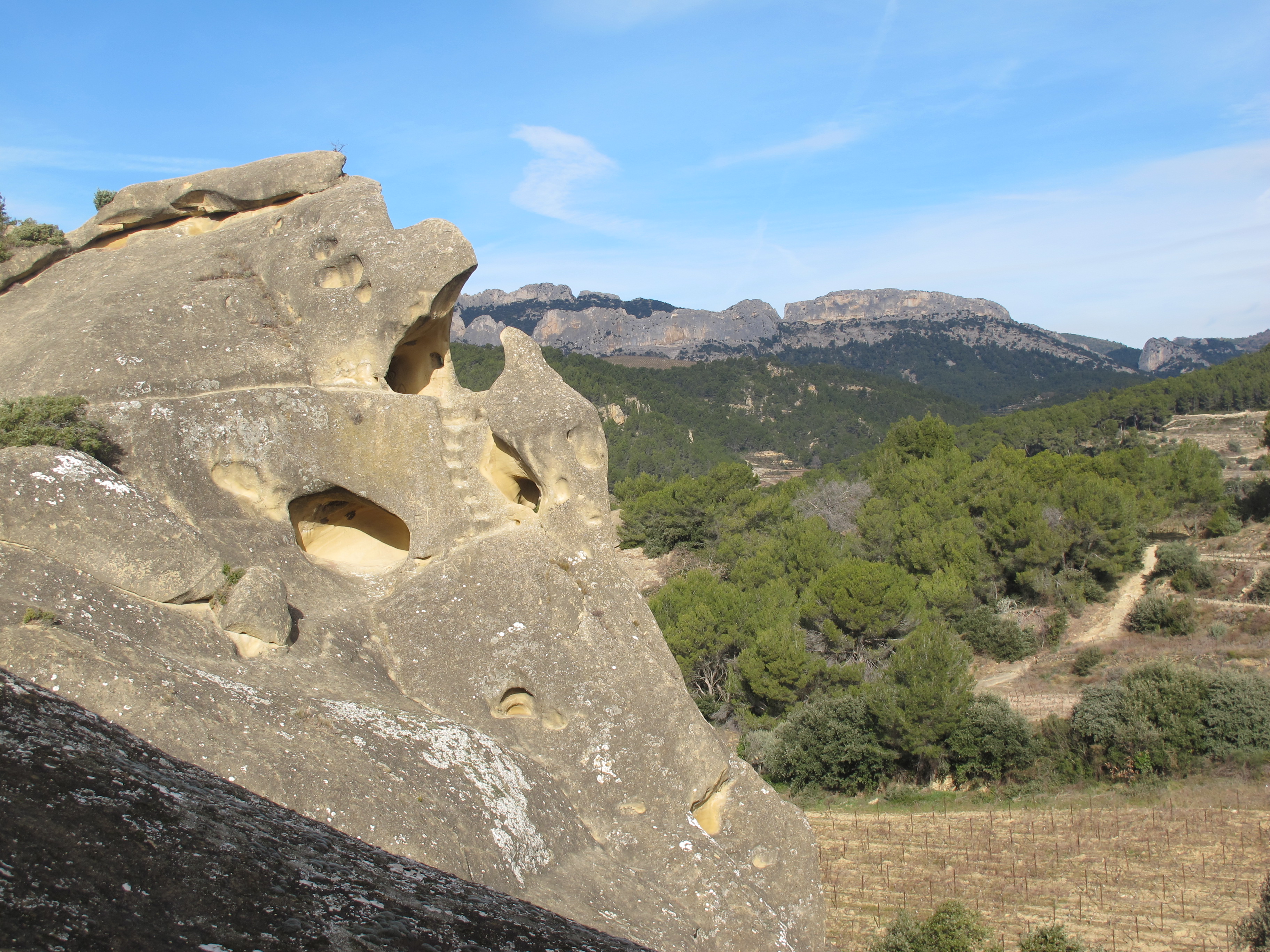
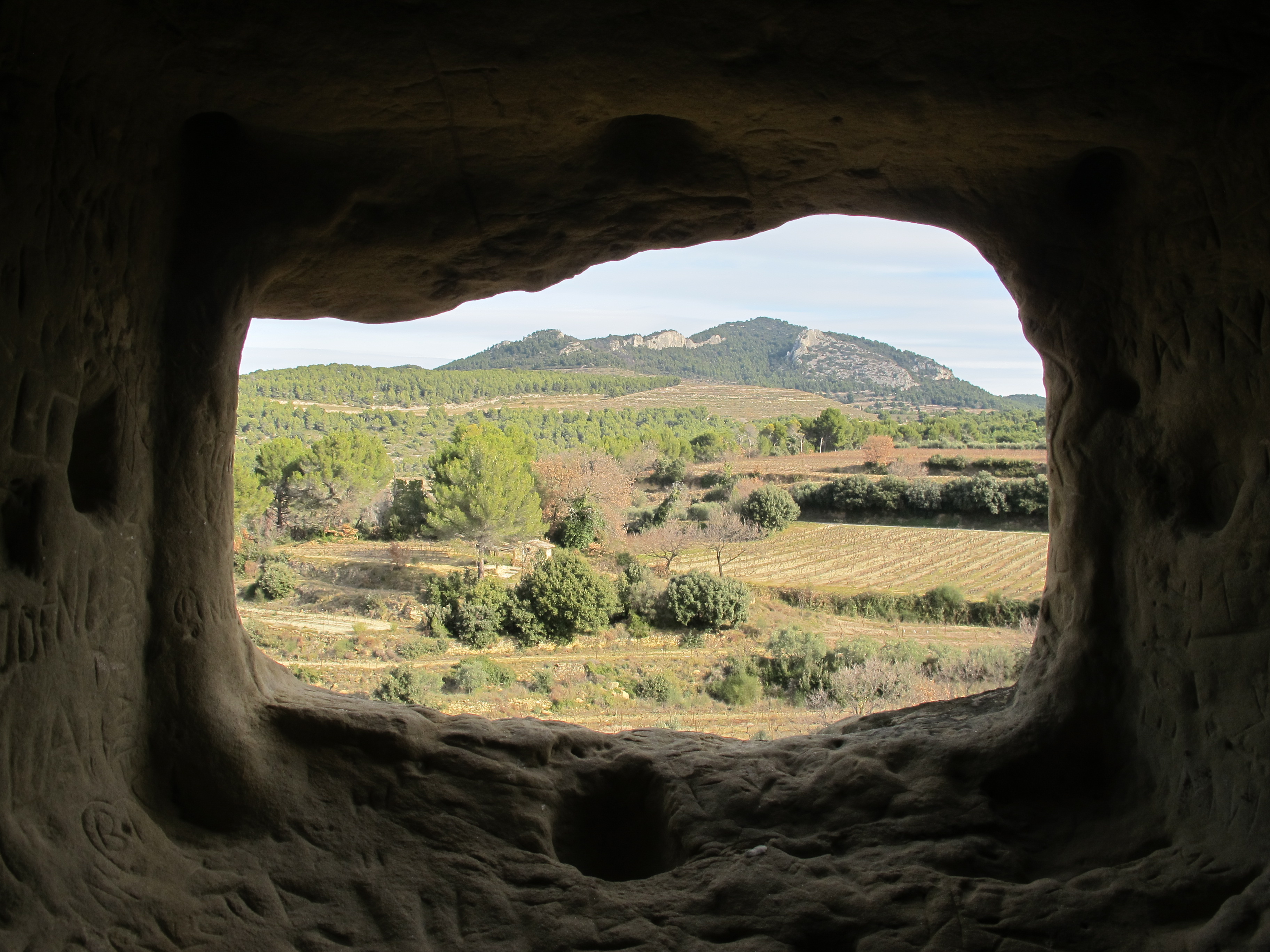
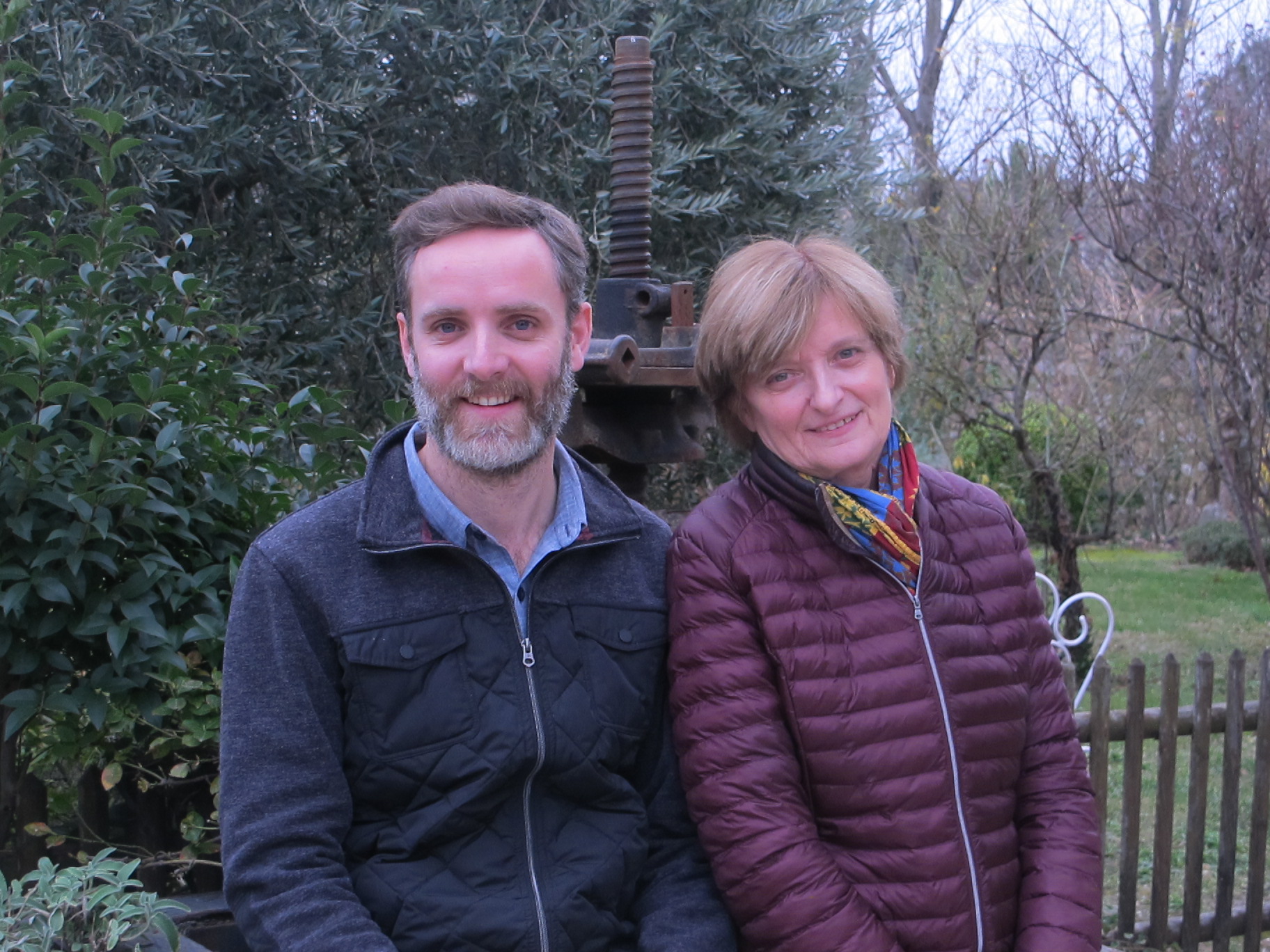
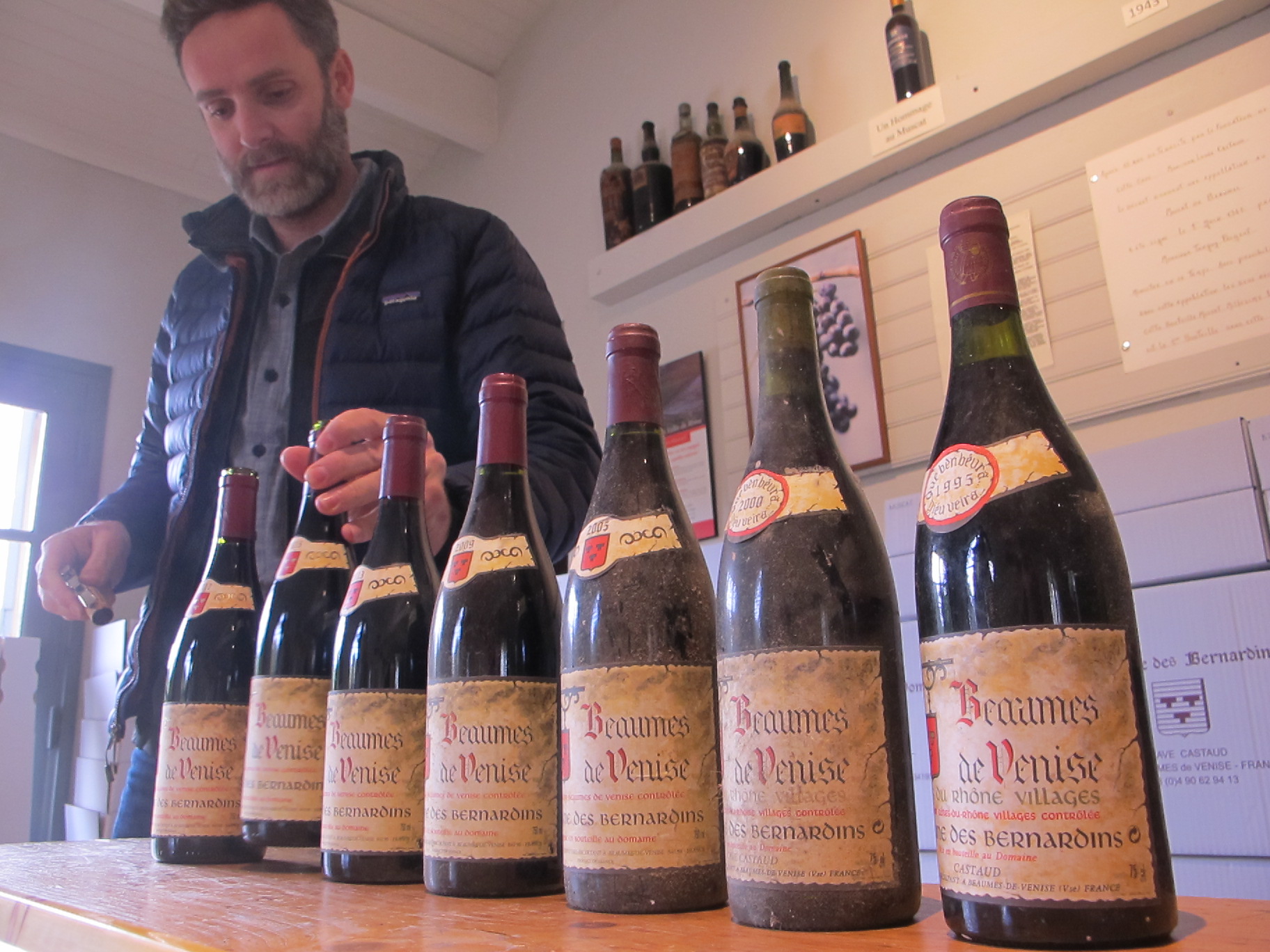
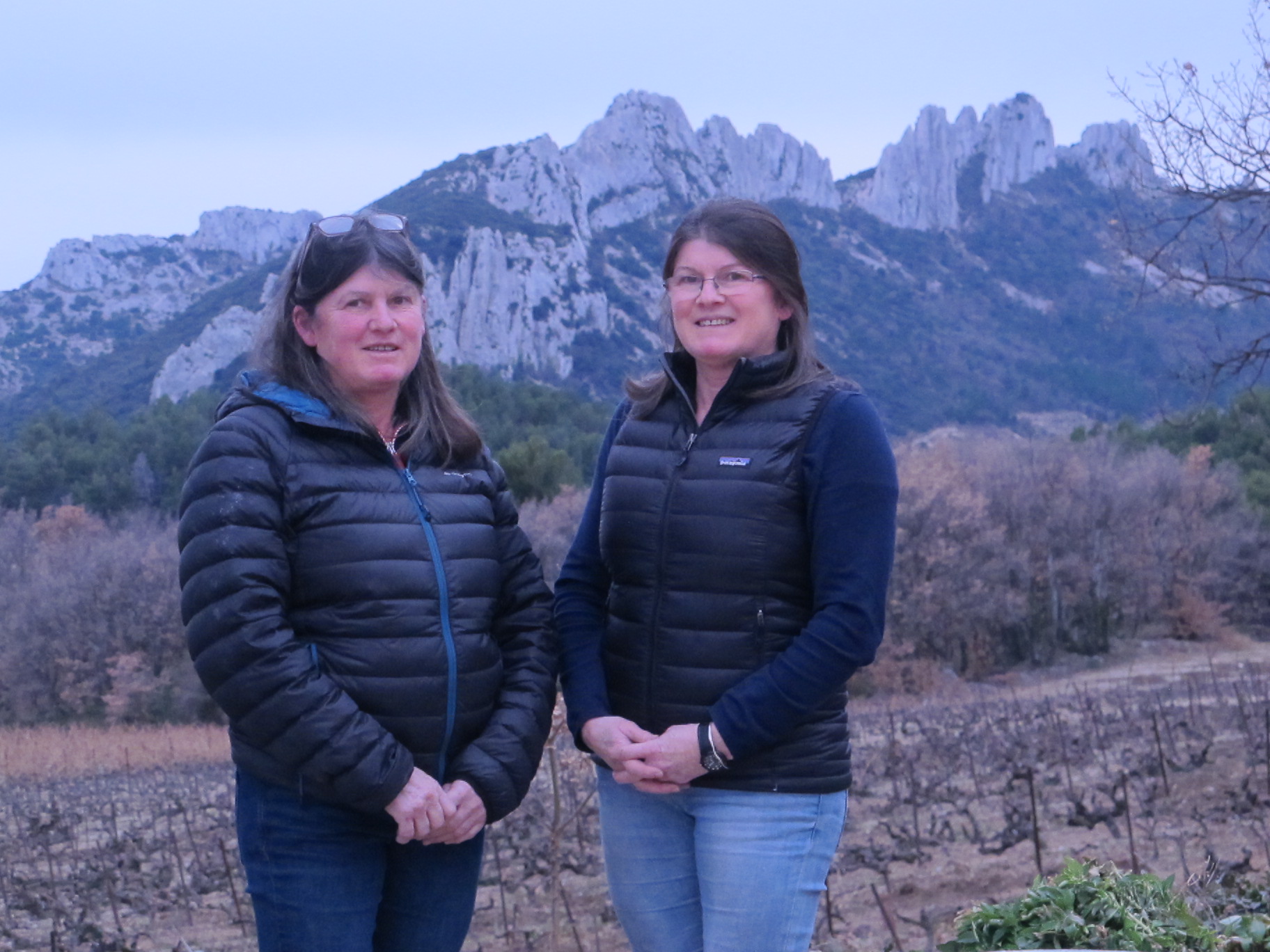
All images © Matt Walls
Crab brains and Cabernet

The last twenty metres of road aren’t yet tarmacked on the way to He Jin Zun winery in Ningxia, northern China, so we get out and crunch over the gravel on foot. Consultant winemaker David Tyney bounds out to greet us and walks us through the building site past rows of gleaming steel tanks into the noisy winery. He’s from New Zealand but most other employees are locals. A dozen women in colourful headscarves are huddled over the speeding sorting table, an older man forks piles of discarded stalks, some younger ones tip crates of grapes into the press. Tyney surveys the busy scene. “None of this was here two weeks ago,” he says, “it was just a dirt floor.”
Other vast buildings are being hurriedly pulled up nearby. “We’re waiting for the concrete to dry before we can pick the Cabernet,” says Tyney, only half-joking. This year they’ll produce 800,000 bottles. Next year they’re aiming for 2 million. For a wine region, the scale of ambition and the pace of change are breathtaking. Ningxia faces significant hurdles: a mismatched food culture, an extreme climate and uncertainty over grape varieties. But they have proved that good wine can be produced here and I’ve never seen a region so determined to succeed.
From desert to vineyard
The jagged Helan Mountains run north to south, rising to over 3,500m. They represent the border of Inner Mongolia and northern China. To their west, Alxa League in Mongolia; to their east, Ningxia province in China. Ningxia’s wine region inhabits a dusty strip of land around 120km long that lies between the foot of the mountain range and the Yellow River.
Thirty-five years ago, this was a coal-mining community in a desert. The soils are a beige sandy loam that get rockier the closer you get to the mountains. It doesn’t rain much – at best 150mm a year. By itself, the land supports little more than some tufty dry grasses. But by tapping the Yellow River local governors realised they could grow much more. The poor soils weren’t suited to all crops. But grapevines prospered.
To begin with, winemaking was led by large government projects set up with help from the armed forces. Observing the possibilities, private companies and family enterprises followed. The floodgates really opened when Helan Qingxue winery won the ‘Red Bordeaux Varietal Over £10’ International Trophy for their Jiabeilan 2009 Cabernet blend at the 2011 Decanter World Wine Awards. In 2012, the government set up the Ningxia Wine Bureau to support the burgeoning industry. Now it’s home to 86 operational wineries farming 38,000 hectares of vines, and this is expected to double in the next 10 years. The capital Yinchuan has been re-imagined as a pristine modern city housing two million people.
Looking west

With little in the way of winemaking history in China and no indigenous wine grapes, where do the people of Ningxia look for guidance and inspiration? A drive around the region makes it abundantly clear. Some wineries, such as Château Changyu Moser XV (who part funded this trip, along with the Ningxia Wine Bureau) wouldn’t be out of place in the Médoc. And that Decanter Trophy has confirmed their belief that Bordeaux blends are the future. Some might scoff that a region that can’t survive without irrigation isn’t naturally suited to making wine. But once upon a time, Bordeaux was a swamp.
Cabernet Sauvignon is by some margin the most popular grape, followed by Merlot. Carmenère, known locally as Cabernet Gernischt, is also fairly common. Red wine makes up 90% of production. White wines are mostly made from either Chardonnay or Welschriesling, referred to locally as Italian Riesling (unrelated to the Riesling of Germany). They also make a little icewine.
Culture clash
Though red wine is more popular here, at the dinner table white wine often feels more suitable. Large dishes to be shared are delivered when ready, and they keep coming – fried egg with fresh tomato, deep fried eel, lambs’ trotters, honeysuckle buds, fish cooked in boiling stock, spicy soups… it makes any efforts at wine matching redundant. I can confirm that crabs’ brains and Cabernet are not a match made in heaven.
I found myself thirsting for off-dry Riesling, Fino Sherry and sweeter sparkling wines, but even though white wines are a more natural fit with spicy, sometimes oily dishes, its unlikely we’ll see plantings increase. Warm or hot drinks are considered healthier than cold drinks, and red is seen as a lucky colour in China – and these things matter.
Beer and baiju (a high-strength spirit) are much cheaper and more popular than wine. I was told that total baiju sales top €80 billion a year, while wine sales were just €8 billion. Wine tends to be stocked only in high-end restaurants and is still seen as a prestige drink, but it’s growing in popularity.
Mastering the vineyards

Cabernet Sauvignon might be king, but Bordeaux this is not. High altitude viticulture (vineyards sit at around 1,100m, higher than England’s highest mountain), a lack of rain and a continental climate make for extreme conditions.
There are some benefits – big differences between day and night temperatures bring freshness to the aromatics. There is little in the way of disease or pests to contend with – even 135ha vineyards such as Pernod Ricard’s Helan Mountains can operate organically except from some fertilizers.
The main challenge is the climate. “Minus 15 is when you expect to see damage,” says operations manager Mike Insley. “At minus 18 you expect to see some vine death.” With temperatures regularly dropping to -25 ̊ C in winter, like everyone in Ningxia, he has to get the vines pruned and buried under half a metre of earth by late November. That’s right; all the vines in the 135ha estate are taken off their wires, lain down flat, the earth between the rows is dug up and piled on top of them as insulation. It’s a laborious and expensive yearly exercise but without it the vineyards wouldn’t survive. The oldest vines in the region were planted at Legacy Peak winery in 1997; I wonder whether vines much older than this will withstand such treatment.
When the vines are dug up again in March, budbreak happens within days. But the growing season is short – and the grapes must be picked before the frosts that can hit as early as mid-October. Summers can be hot but some estates still have difficulty in achieving physiological ripeness, resulting in green, herbaceous flavours and bitter tannins. Huge sums have been invested in top-of-the-range winery equipment all over Ningxia, but what’s needed now are skilled vineyard managers with the local knowledge necessary to tackle these unique challenges.
Grape expectations
There has been some early success with Cabernet, but experimenting with earlier-ripening grapes would be sensible. Charismatic ex-fashion designer Shao Qingsong at Lilan Winery believes “we still need to find suitable varieties for this region.” Like many local winemakers he’s trialling Marselan, a crossing of Cabernet Sauvignon and Grenache. There are some successful examples but it’s a puzzling choice for such an ambitious region – after all, who can name a world-beating Marselan? Looking for a grape that your region can ‘own’ is understandable, but I wonder how much South Africa has really benefited from such a close association with Pinotage.
Château Mihope has had some success with Viognier. Silver Heights are testing out Grenache, Mourvèdre and Zinfandel. Helan Quinxue is trialling Malbec and Tempranillo. According to Ian Dai, the only Natural winemaker in Ningxia, “Syrah has huge potential”. Personally speaking, I’d give Cinsault a try. But Lenz Moser, Austrian consultant winemaker at Château Chengyu Moser XV, believes Bordeaux blends are here to stay. “Why reinvent the wheel?” he says. “Let’s be pragmatic.” And he’s proved that consistently successful Cabernets are possible here.
Land of opportunity

So what is the unique style of Ningxia Cabernet – the goût de terroir? “I’m still looking for that Ningxia stamp,” admits Insley at Helan Mountains. “That’s one of the challenges for Ningxia – [defining] what makes Ningxia wine special.” The Cabernets I tasted were broadly a little lighter in body than those of Bordeaux, with concentrated bright fruits and a spicy vein running through them. But this is a young region with young vines, and any attempt at a definitive description of Ningxia’s style at this stage would be premature.
There are already five sub-regions and a nascent cru system, but it feels too early for this kind of detail. Very few Ningxia wines are yet exported, but as more find their way out of China this will shine a light on how the wines stack up in terms of style, quality and value. Dai agrees that wineries “have to be willing to compete with imported wines – and to export.” Despite the extraordinary amount of money, determination and energy being invested here, there are some things – like vine age and viticultural experience – that only come with time. “It used to be America,” says Moser, “but for me the new land of opportunity is China.” After visiting Ningxia, I can see why.
Some of the best of Ningxia
Château Chengyu Moser XV ‘Grand Vin’ 2017 (Ningxia, China)
RRP £65.00, speak to Berry Bros. & Rudd, soon to stock the 2015.
100% Cabernet Sauvignon, 100% new French oak for 24 months.
Austrian winemaker Lenz Moser has become something of a figurehead for the Ningxia wine industry and it’s not hard to see why. Under his consultancy, Château Chengyu Moser XV is now producing the best wines in the region, an impressive range from top to bottom. The 2015, 2016 and 2017 Grands Vins are all excellent wines, but the 2017 shows particularly well, the most refined of the three vintages. It’s powerful but lifted in character with a gentle spice aromas ingrained into the black fruit. Silky in texture, tailored, with a long finish. Should age with interest.
93 points, 2020 to 2033
Silver Heights ‘Summit’ 2014 (Ningxia, China; 14.5%)
NA UK
60% Cabernet Sauvignon, 40% Merlot, 24 months in new French oak.
Yuan Gau’s husband worked for 23 years at Château Calon Ségur in Bordeaux – she met him while she was doing a winemaking stage there. They now own a 70-hectare organic estate together in the north of Ningxia. Their inexpensive Last Warrior wines are good value; Summit is their top red. It’s a touch reductive on the nose but opens up with air. Medium-bodied, good freshness, actually quite light-bodied but has a good concentration of bright berry fruit and fine-grained tannins. A hint of greenness on the long finish but is nevertheless a very good wine.
91 points, 2018 to 2022
Helan Qingxue ‘Jiabeilan Reserve’ 2015 (Ningxia, China; 14.5%)
NA UK
100% Cabernet Sauvignon. 16-year-old vines, 14 months in 70% new oak.
Their Jiabeilan Reserve 2009 won the 2011 Decanter World Wine Awards Best Bordeaux Varietal over £10 Trophy, a turning point for Ningxia wine that kicked off the development of the modern industry. Their 2015 is has a distinctly minty nose, alongside fresh and lifted blackcurrant fruit. It’s a light- to medium-bodied style of Cabernet with fine tannins and balanced acidity, leading to a tapered finish. Elegant and fresh, with less concentration and body than a typical Bordeaux, but also fresher than many.
90 points, 2018 to 2023.
Château Lanny ‘Reserve’ 2013 (Ningxia, China; 13%)
NA UK
90% Merlot, 10% Cabernet Sauvignon.
Menthol, polished woods and black cherry with an unusual and distinctive fresh herbal touch. Medium-bodied, fully mature now but still lively, with some mushroom and beef stock on the palate. Good acidity, good balance, some length.
90 points, 2018 to 2019.
Legacy Peak ‘Kalavinka’ 2014 (Ningxia, China; 14.5%)
NA UK
85% Cabernet Sauvignon, 15% Merlot. 14 months in new French oak.
Owners of the oldest vineyard in Ningxia; a plot of 21-year-old Cabernet Sauvignon near 1,000-year-old stone tombs dotted across the landscape nearby. Their Kalavinka is named after a stone icon found buried in the vineyard. Mature black fruit compote aromas, a touch minty, with some oak spice. Medium-bodied, good energy and concentration of fruit on the palate.
89 points, 2018 to 2020
Domaine Pu Shang Marselan 2016 (Ningxia, China; 14.5%)
NA UK
90% Marselan, 10% Cabernet Sauvignon. 50% new French oak.
A small family-owned winery established in 2009 which specialises in Marselan. Their 2016 has an attractive nose; raspberry and plum skin with a marked cedar note from the oak. Persistent bright red fruits on the palate pepped up with marked acidity but the overabundant oak leads to a slightly pinched finish. An easy thing to fix for future vintages – one to watch.
89 points, 2018 to 2020
He Jin Zun ‘Helan Hong’ White 2016 (Ningxia, China; 12.0%)
NA UK
100% Welschriesling, unoaked.
The first vintage of this new government-owned estate run by energetic young New Zealander Dave Tyney. It’s a light, fresh, style with pear and a touch of banana. Light-bodied but good fruit on the palate and balanced acidity. A straightforward wine with good drinkability.
88 points, 2018 to 2019
Château Mihope Chardonnay 2017 (Ningxia, China; 13.0%)
NA UK
100% Chardonnay.
A 100-hectare estate planted in 2013 by the electronic appliance manufacturer Midea Group. Their 2017 Chardonnay has a light macadamia oak sheen on the nose and a silky feel on the palate. Elegant, well balanced peach and apricot fruit.
88 points, 2018 to 2020
Chandon China Brut NV (Ningxia, China, 12.5%)
NA UK
70% Chardonnay, 30% Pinot Noir.
Moët & Chandon’s 68-hectare outpost in Ningxia produces a white and rosé brut and a white and rosé medium-sweet style called Me (translates as ‘besties’). They only make traditional method sparkling wines, all for the domestic market. The white Brut in the best; soft fizz, well balanced, just dry enough to be described as a Brut. Good acidity and a touch of autolytic character. Pleasantly drinkable international fizz.
88 points, 2018 to 2019
Helan Mountain ‘Premium Collection’ Chardonnay 2017 NV (Ningxia, China; 12.5%)
NA UK
100% Chardonnay.
Helan Mountain is a large estate now fully owned by drinks behemoth Pernod Ricard. Head winemaker Linda Ren made the 2017 Premium Chardonnay after a winemaking stage at Church Road in New Zealand. Tasting some older Chardonnays, it’s clear the new techniques she picked up have really benefitted her wines. It’s 60% barrel fermented, some old barrels, some new. Part whole bunch pressed direct to barrel. Part controlled juice oxidation, part wild ferment, part malolactic. It’s oaky on the nose, with some citrus notes. Medium-bodied with good intensity of fruit. It’s also pretty oaky on the palate, but has real vibrancy of fruit underneath.
88 points, 2018 to 2019
Yuanshi ‘The Soul of the Mountain’ 2014 (Ningxia, China; 14.2%)
NA UK
72% Cabernet Sauvignon, 20% Cabernet Gernischt, 8% Merlot, 18 months in French oak.
Yuanshi is an extensive 1,500-hectare park (encompassing winery, hotel and 100-hectares of vineyard) established in 2008 by a local businessman who made a fortune in tree production and quarrying. Beautifully designed with expert local craftsmanship with incredible attention to detail, it’s one of the most visually stunning wineries I’ve ever visited. The 2014 Soul of the Mountain is lightly peppery in aroma, with vanilla-flecked blackberry and blackcurrant. It’s a medium-bodied, concentrated, fairly tannic style, not too green, with a savoury finish.
87 points, 2020 to 2025
Lilan Winery ‘Lan Cui’ Cabernet Merlot 2016 (Ningxia, China)
NA UK
80% Cabernet Sauvignon, 20% Merlot. 12 months in French oak, 50% new.
A new project by fashion designer Qingsong Shao, this 100-hectare estate was planted in 2011. Medium ruby, fairly deep in colour. Blackcurrant and blackcurrant leaf. Medium to full-bodied. Acidity is firm, fruit is quite lush, but then slightly herbaceous on the palate, with some green tannin on the finish.
87 points, 2018 to 2020
All images © Matt Walls.
First published on timatkin.com.
2017 Rhône Report - results now live

Is 2017 a great Rhône vintage? The shortest answer is 'sometimes'. No vintage is 100% consistent but 2017 is particularly variable, oscillating from the phenomenal to the undrinkable. It was a very warm and exceedingly dry year, yielding a small crop of powerful wines, the best of which will last for decades.
My take on the vintage and a selection of the Top 300 most notable wines (from over 1,000 tasted) is now available on Decanter Premium. Until now I've included Côtes-du-Rhône/Villages appellations in my annual vintage report, but due to the ever-growing number of samples, this year I've concentrated solely on the 9 Southern Rhône and 8 Northern Rhone Crus. It ranges from top Châteauneuf-du-Pape and Côte-Rôtie to overperforming cave co-operative wines selling for less than £10 a bottle.
It's certainly a vintage worth buying, but buy with care. Access here (Decanter Premium subscription required).
Decanter article on sweetness in wine

Here's a recent article that I wrote for Decanter on sweetness in wine - how do you know how sweet your wine will be before you pop the cork? I spent a few weeks tasting loads of different wines of various sweetness levels from all over the world, and it delivered some of the most memorable drinking experiences of the year. Makes me wonder why we've become so insistent on drinking dry wines all the time, when it's just one end of a spectrum, with amazing bottles all the way from one end to the other. Here's a link to a PDF of the article.
Decanter Sweetness November 2018
Now all you have to do is decide which cover of Sweetest Taboo by 80s soul diva Sade to listen to while you read... the Jackson State University Marching Band or Shola Ama ft. Glamma Kid?
Eccentric current
English sparkling wine producers collectively present a terribly well-to-do appearance, all smart chinos and glasses of fizz on the lawn. But Pythonesque tendrils are creeping through the cracks in the patio… From Sussex Pinotage, to Tooting rosé, all the way to orange wine from Surrey, the irrepressible English sense of eccentricity is alive and kicking in its increasingly peculiar and wonderful still wines.
Leonardslee Pinotage, Sussex

Twenty-five years ago, Penny Streeter (above left) was a single mother of three children living in sheltered accommodation for the homeless, with nothing but two deckchairs to sit on. Since then she’s developed a thriving medical recruitment business and now she’s No. 744 on the Sunday Times Rich List with an estimated fortune of £157m. After returning to her native South Africa she bought Benguela Cove vineyard and resort in Hermanus, and two properties in Sussex: Leonardslee Lakes & Gardens and Mannings Heath Golf Course. Both now are home to vineyards, 16 hectares mostly planted with varieties for sparkling wine. And half a hectare of Pinotage.
When I first saw the press release declaring England’s first Pinotage vineyard, I actually thought it was a practical joke. It’s not as if UK demand is so strong that South Africa can’t cope… Johann Fourie (above centre) is cellar master for all of Streeter’s properties, so I asked him – why Pinotage?
He laughs. “I’ll be the first person to put up my hands and say I have little experience of English viticulture,” he says, “so I might make a complete fool of myself.” But he works with viticulturist Duncan McNeill who has over a decade’s experience in the UK. “We’re pushing the boundaries,” says Fourie, and the more he explains the thinking behind it, the more Pinotage makes sense.
Together, Fourie and McNeill were surveying a site on their property trying to figure out the optimal variety to plant to produce a still wine. They considered the marginal English climate; the threat of spring frosts, the short growing season, occasional poor weather at harvest. It got Fourie thinking. “Pinotage is fairly late with budburst… it ripens quickly – we always pick it first in South Africa – and it has fairly thick skins, it’s really disease resistant which is important in the UK… and it doesn’t have any of those leafy, green flavours if you pick early.” It ticked all the boxes. He got on the phone and managed to source some vines in Switzerland of all places (he adds that it’s grown in other cool climate countries such as New Zealand and Canada.)
He points out the trend in South Africa is towards a more elegant style of Pinotage, which is what he’s aiming for here; more like a Pinot Noir, “not a big 15% alcohol red wine.” And if the weather doesn’t play ball some years, he can use it as base wine for sparkling instead – Pinotage does have Pinot Noir as a parent variety after all, and he points out that Simonsig already make a good one. “It might be a total fail, but if we don’t try, we won’t know,” he says. All being well, the first release will be in 2023. And I can’t wait to try it.
Château Tooting, London

Richard Sharp and Paul Miles, two friends from the unglamorous borough of Tooting in South London, were observing a harvest whilst on holiday in France and asked each other if it was possible to make a wine back home in the capital. Sharp had a grape vine in his garden and wondered if he could find other contributors who might want to turn their unwanted grapes into wine. Sharp says “we were just messing around really” for the first vintage in 2009, but they’ve stuck at it and now they produce up to 3,000 bottles a year.
Château Tooting now has over 250 contributors who bring in grapes from all over London, and not just from gardens. They’re harvested from schools, hospitals, allotments, community greenhouses, railway sidings – anywhere really. “People bring their grapes in many weird and wonderful ways – on the tube, on bikes, in old cars, on the bus in backpacks… it’s a really random collection of people but it’s very inclusive.”
Some people know which grape varieties they have, but most have no idea. All are brought to a central collection point on a specific day each year, and they’re trucked to Halfpenny Green Wine Estate in Staffordshire who makes the wine. The grapes are all vinified together to produce a still rosé. This year they plan to make a sparkling one too. Members are allocated a number of bottles they can buy for £9.00 each according to the weight of grapes they supply. Non-member can buy via their website urbanwineco.co.uk for £15.99, and you can also find it in some London restaurants.
Considering the jumble of grape varieties involved and the limited control they have over cultivation, the wine is much better than it has any right to be. Harvest day this year is 29th September in Battersea – if you’re a Londoner with a source of grapes, get involved.
Litmus Wines Orange Bacchus, Surrey

If Château Tooting was born out of sheer enthusiasm, Litmus Wines have a rather more technical foundation. Established in 2008 by merging the winemaking consultancies of John Worontschak and Sam Harrop MW, it’s quicker to list the wine-related activities that Litmus don’t do: they are winemaking consultants, contract winemakers, they supply biotech solutions, import and distribute wine – and they make some too. And with this kind of knowledge and expertise, it’s no surprise they’re coming up with some off-the-wall styles.
They occupy a facility in one of the UK’s largest wine estates, Denbies in Dorking, Surrey, so they have plenty of fruit at their fingertips. They make a red Pinot Noir and a Chardonnay/Bacchus blend, but their two latest editions are more esoteric: a still white Pinot Noir and an orange wine made from Bacchus.
General manager Mike Florence simply explains that “we love Blanc de Noirs, and John thought there’s no reason not to make a still version.” The fruit needs to be riper than that destined for sparkling wine production, so they can’t make it every year, but they make a few thousand bottles when nature allows. Aromatically speaking their 2015 is between floral and smoky, it has a serious demeanour, very dry with firm acidity running through it like a blade.
The Litmus 2015 orange wine – their first vintage – is more easy-going. Made from hand-harvested Bacchus grapes, it spends two weeks on the skins after fermentation; to the eye it’s close to a white wine, though with deep yellow colouring, but on the nose it’s something else. It’s highly aromatic and gently grassy with white pepper, grapefruit and elderflower all jostling for attention. It’s fairly full-bodied with a gently oily texture that helps counterbalance the fine tannins, and finishes dry, crisp and slightly saline. You could accuse them of chasing trends, but when it’s well made and relatively inexpensive – £15 a bottle isn’t a high price for a good orange wine – who cares.
So do they have any exciting new projects? “I can’t tell you all the secrets!” says production manager Matthieu Elzinga, “But this will be a very big year…” Watch this space.
‘The best weather we’ve ever seen’
There are plenty more examples of innovative styles: Albariño from Chapel Down, Kent; a fortified wine from White Castle Vineyard, Monmouthshire; a Bordeaux blend from Sharpham, Devon; a Reichensteiner pet-nat from Oxfordshire by Vagabond; the list goes on.
Some experiments are less successful. Stephen Skelton, the leading expert on English and Welsh wine, cites the Barclay Brothers’ 60ha vineyard planted on the island of Sark in the Channel Islands in 2010 at great expense. It has since been abandoned.
The boom in planting we’ve seen in the UK – from 430ha in 1984 to 2,275ha in 2017 – has largely been Chardonnay and Pinot Noir for sparkling wine production. When it comes to still wines, we still don’t really have the climate – “there are not that many varieties we can grow,” admits Skelton. But things are looking up. He describes 2018 as “the best weather we’ve ever seen” which is great news for still wines. The UK is increasingly well-known as a source of world-class sparkling wines – as it should be. But for me, the more beguiling side of English and Welsh wine is found in the still.
First published on timatkin.com.
I’ve made a wine documentary for BBC’s Inside Out!

Despite the fact so many of us regularly drink and enjoy it, wine rarely features on UK television. So I’m really pleased to be part of a 10-minute documentary on the historic 2018 vintage in England and the advent of London’s urban wineries for BBC London’s Inside Out. Watch the video here.
As a nation, we can still view wine with suspicion, like it’s some kind of ‘elitist’ drink compared to locally-produced beer and spirits. But the spread of vineyards across the UK close to peoples’ homes and the growth of urban wineries is helping to demystify it. And as more of our family and friends are employed in this flourishing industry – growing, making or selling the wines – we'll soon realise it’s just another craft drink made by normal British people like you or me. And we’re good at it– especially when nature gives us an incredible harvest like this one.
This is my first stab at presenting, and it turns out TV drops you into some unexpected places: riding tractors at dawn, snipping bunches from vines (my first time believe it or not), foot-stomping grapes in a press… It’s also much harder work than it appears, particularly ad-libbing pieces to camera – it’s amazing how easy it is to mangle your words when you have an unblinking lens in your face!
Thanks to Dippy Chaudhary, Victoria Holden and Andy Richards at Inside Out for giving UK wine some room to breathe.
Watch the documentary on Inside Out, 7.30pm Monday 29th October, BBC London –available on iPlayer shortly after.
Undeniable class

Imagine trying to buy a bottle of Burgundy if appellations didn’t exist. You’d have the producer, the vintage, maybe a brand name. But with no agreed village boundaries, let alone Premiers or Grands Crus, how well could you really get to know the region? Wine classifications may not be the sexiest topic, but admit it – you’d be lost without them.
Not long ago there seemed to be as many different systems as there were major wine regions. Not all were based on villages and vineyards; some were based on sweetness, some oak ageing, others market value… Some were intuitive and helpful – others less so. But one by one, if not abandoning the old order completely, many wine regions around the world are beginning to classify their vineyards along similar lines to the Burgundy pyramid: regional wines at the base, then Village wines, on to Premier Cru vineyards and finally Grand Cru vineyards at the peak. But what is driving this change, why is Burgundy an inspiration, and who, if anyone, benefits?
Outgoing models
Over the years, most wine classification systems have become gradually less relevant. In Germany, the Prädikat system of classifying wine (or at least grapes) by sweetness once made sense, but as changes in vineyard techniques and climate have made ripening more reliable, it’s not as critical as it once was. And in terms of guiding wine drinkers towards wines with specific levels of sweetness, it was only ever barely fit for purpose. The VDP (the Verband Deutscher Prädikatsweingüter, an association of top producers), took it upon themselves to improve matters. Their system retains the same terms, but they refer to the sweetness of the finished wine and are only used for non-dry styles. To this they’ve added four levels of vineyard quality: Gutswein at the base, up to Ortswein, Erste Lage and Grosse Lage. Clemens Busch, a prodigiously talented winemaker in the Mosel, is a member of the VDP. “I think the classification system is working well inside the VDP…” he says. “I think everywhere you go it is possible to go in four steps of the quality of the vineyards and grapes.” A model for Germany as a whole to adopt? Time will tell.
The authorities in Rioja have been even busier. As oak ageing becomes increasingly unfashionable with winemakers and wine lovers alike, aligning wine quality with time spent in barrel now appears distinctly old-fashioned. Like the German Prädikat model, there were once sound historical reasons to use this model. But classifying by place is now gaining ground. In 1998 they allowed labelling by one of the three zones of production; then in 1999 by village. In 2017 they introduced Viñedos Singulares, defined ‘singular vineyards’ with more stringent production criteria. Winemakers appear broadly welcoming. Until now, discussions have so often returned to barrels sitting silently in darkened cellars; I hope this development will lead the conversation toward sunlit Riojan vineyards and the individuals that work them.
Alsace has had vineyards designated Grand Cru since 1975, but in the next year or two it’s likely to be joined by Premiers Crus, then perhaps later by Village wines, completing the Burgundy pyramid. Labelling by grape has served it well in the past, but with its ‘noble varieties’ now seeing competition from around the world, refocussing on place seems prudent. What remains is the task of further dividing its largest parcels – 80 hectares for a single Grand Cru stretches the limits of credibility.
These are just three examples. Others include Priorat and Bierzo, which have both recently launched four-tiered pyramid vineyard classifications. And at a seminar last week in London, Italian wine critic Walter Speller and representatives from nine estates in Brunello di Montalcino put forward a convincing argument for creating official subzones there. The New World is not exempt either. Kumeu River in New Zealand for example has three labels for its peerless Chardonnays: Village, Estate and three single vineyard wines. Winemaker Michal Brajkovich MW says that although he’s glad to be free from an official appellation system – a “legal straightjacket” that would stifle innovation – he believes that “terroir-based wine production… will still set the standards for what can be achieved in terms of wine quality, and if anything will grow in popularity and influence.”
Why Burgundy?
Classification systems are nothing new. Early examples are Jurançon in South West France in the 14th century, and in the 16th century Gattinara in Alto Piemonte. They reflect the simple fact that within a region, there is diversity of style and quality.
But if any system has stood the test of time, it’s Burgundy’s. According to the Oxford Companion to Wine, its vineyards “are the most minutely parcellated in the world”. It has been farmed this way for centuries, and by vinifying different plots the same way and noting enduring differences between the resulting wines, Burgundian winemakers have given us the concept of terroir. Today it’s made up of 84 different appellations – more than 23% of all AOCs attributed to French wines.
Winemaking techniques improve, tastes change; terroir, if not immutable, is at least relatively constant. The Burgundy classification isn’t perfect; it’s possible for a winemaker to make a poor quality Grand Cru wine, and the system promotes status quo over creativity. But at least it remains a more effective way for the shopper to select a quality wine than any other classification system. Furthermore, the market still largely agrees with it.
Who benefits?
In theory, classifications help lead consumers to the style and quality they’re looking for. But as far as drinkers are concerned, there are clear drawbacks as well: I’ve never heard wine lovers clamouring for more. They add complexity to what can already be a confusing subject. And the wines that get rated top inevitably increase in price. When a group of local winemakers proclaim ‘we want to be the Burgundy of Italy/Spain/Moldova’ what they mean is they want their region to be recognised for it’s diversity and quality. They want their locality to be recognised as a ‘fine wine’ region – and no doubt for the price of their land and their bottles to increase accordingly. But for the most faithful wine lover, this is not all bad – higher prices mean more inward investment, and, in time, better quality.
The main function of any worthwhile wine classification system is beneficial to both growers and drinkers: they help wines with a proven track record find their market. Interest in sweetness, oak ageing and grape varieties has waxed and waned in the past, but a wine’s place, its terroir, is unchanging. As Walter Speller said at his recent seminar, “what makes a fine wine? It expresses its origins.” And a fine wine’s origin is its ultimate USP.
I would add that expressing its origin is not enough; a fine wine must also have a consistent track record. Wine is a slow game, with just one swing of the bat each year. It takes decades, if not centuries, for us to uncover a land’s potential and translate it into wine. A classification of Rioja makes sense; one of Sussex, not yet. But when the time comes, you can be sure which region they’ll look to for inspiration.
First published on timatkin.com.
Wine bar chains: missing link

The UK is home to over 400 branches of Nando’s. Greene King runs over 3,100 pubs and restaurants. There are over 2,300 Costa cafes; 12 in Chelmsford alone. We British love a chain. So why are there so few sizeable chains of wine bars? Only three spring to mind with over 10 outlets: Davy’s, All Bar One, and newcomer Veeno. How do they compare, and is it even possible to create a large chain of wine bars that can please casual drinkers and wine geeks alike? I paid them all visit, along with some of their smaller competitors, to find out.
Davy’s
When I finished my A-levels I worked as a cook in a Davy’s restaurant called The Crypt in Oxford. I have many fond memories: walking proudly past tables of satisfied customers, tasting Port for the first time, strolling past a couple having full sex on a chair in a darkened corner of their work Christmas party… It has long since closed its doors, along with all their other sites outside London, but they still own 22 bars in the capital, the five El Vino wine bars they bought in 2015, and their wine merchant business, established in 1870.
I paid a visit to The Boot & Flogger down a quiet side street in London Bridge, which they describe as ‘London’s first real wine bar, opened in 1964 by John Davy’, and it hasn’t changed much since then – it has more wooden panelling than you can shake a pewter tankard at. Like many Davy’s wine bars, it has a crepuscular air (like much of its grey-haired clientele on my visit), accentuated by the candlelight and polished brass. The brand projects an idealised traditional British past, the atmosphere is one of sedate conviviality, a kind of rosy-cheeked Dickensian hygge.
It’s still a family business, and it feels like it; service is kindly and personable. The everyman menu has a home-cooked feel – my roasted Scottish salmon, fennel braised potatoes and tomato herb sauce (£16.95) was ample, competent, tasty, though cooked without undue flair.
The main wine list has around 50 listings, mostly between £20 and £40, with a few additional top-end fine wines. Though it doesn’t get the wine geek’s pulse racing, the list is varied, offers over thirty wines by the glass, is fairly priced and has an heartening selection of fortified wines. With an intentionally limited beer and spirits offering you can see that wine is genuinely appreciated here, even if the locals’ tastes veer towards the conservative.
It’s hard to imagine a London without Davy’s Wine Bars – they’re part of the furniture. Their wine lists could be more exciting, but this venerable company serves its market well and is no doubt somewhat tied to its demands. Happily, they’re branching out with bars such as their Wine House in Holborn, which features banks of Enomatics and a more modern feel. But they are content in their London heartland for now; owner James Davy explains “as a very Central London-based business Davy’s Wine Bars still have room to explore Greater London before considering anything further afield.”
All Bar One
The first All Bar One opened in Sutton, Surrey, in 1994. They now have nearly 50 dotted around the country. They proudly claim to have ‘Wine Ambassadors in every bar trained to WSET level’ and appear more wine-focussed than competitor bar chains like Slug and Lettuce. I visited their new Waterloo branch, within the immediate gaze of the London Eye. It’s spacious inside, with wooden floorboards, exposed brick, brown leather banquettes; the clean, necessarily anonymous interior of the national drinking and dining chain. The soundtrack consists of women with pianos and men with guitars. It’s what Yates’s Wine Lodge aspired to be in the 90s before they removed the two last words from their name and embraced their destiny of confectionary-flavoured shooters and casual violence.
It’s a Friday lunchtime in a prime site, and the place is busy – it took me several minutes of wandering around and standing at the bar to get anyone’s attention. Most wine bars would kill for his level of trade, and it gives the place a buzzy atmosphere. But most people are drinking lager.
The wine list isn’t long: 19 whites, 16 reds, 5 rosés, 10 sparklings, but it’s been smartly laid out and most are available by the glass. The whites are divided into three sections by style, and then a further three sections within each; ‘trusted’, ‘tempting’ and ‘our best finds’. I tried three. A fresh and balanced MJ Janeil Gros Manseng Sauvignon Blanc (France, £7.40/175ml); a sweet and simple Casa Lia ‘Rag Doll’ Pinot Noir (Chile, £6.35/175ml) and – through ghoulish curiosity, I admit – the Grape Gatsby Pinotage Viognier (South Africa, £5.75/175ml) which was actually worse than my most dour expectations.
The food menu consists largely of anglicised international dishes with a nod to what’s fashionable. I opted for two small plates; buttermilk chicken wings with a Korean BBQ sauce (£7.50) and a lobster mac & cheese (£6.95). It’s tasty fast food, designed with flavour rather than nourishment in mind, and left me craving exercise.
There are some well-known producers on the wines list: JM Brocard Chablis, Henri Bourgeois Sancerre, Mount Langi Ghiran, Yealands. But, as I discovered, you can buy some very bad wines here. And the wine list has no vintages – which you could argue makes sense for a mainstream bar – but the availability of 250ml measures doesn’t do anyone, or the wines, any favours. Rather than wine bars, it feels fairer to describe All Bar One as a chain of upmarket pubs.
Veeno
Two Italian friends living in Manchester, Nino Caruso and Andrea Zecchino, decided to go into business together to share their passion for food and wine. Caruso’s family owns Caruso & Minini, a 120-hectare wine estate in Sicily, so it made sense to open a wine bar. The first Veeno opened in Manchester in 2013. Within five years they have an impressive 18 locations around the UK and are continuing to expand rapidly – Caruso aims “to cover most of the UK with 50 sites and more”. I visited their only London site to date, opened in late 2017, near St Paul’s Cathedral.
Trying to bring a distinctive feel to a first-floor unit in a modern commercial development isn’t easy. Installing low wooden beams has helped, as has lining the walls with bottles. The boxed wine lining some shelves might not speak to the local City traders, however; nor, I suspect, will the soundtrack of emotive Italian hits. Other sites, such as their branch near Leicester Cathedral, feel more characterful.
Both sites have pleasant waiting staff who know little about wine, and managers that know a bit more. Wine occupies half the drinks list. All are sensibly given nicknames (The Elegant, Our Best Seller, Our Driest) which helps wine newbies select the right wine and avoid difficulties with pronunciation. There are just over a dozen reds, a dozen whites and half a dozen sparkling options. Most are between £20 and £40 with a few top-end options (prices depend on site; they often significantly cheaper outside London). Most are available by the glass (175ml or 250ml) and there are various flights and food matching options.
That the winery is in the family no doubt brings certain cost savings. They can afford to offer a lunchtime deal of a panini or salad including a glass of house wine, beer or prosecco for as little as £7. I opted for the Caprese salad at £9. The buffalo mozzarella was good; the accompanying tomatoes were pale orange in colour, cold and tasteless. A seasonal menu no doubt brings complexities to a nationwide chain, but it helps avoid disappointments like this.
But there are drawbacks to being tied to one main producer – a flight of three reds wasn’t expensive at £14 for three 70ml glasses, but the quality wasn’t always good enough. Their Sicani Nero d’Avola was the best, a decent, drinkable example; but at £29 a bottle it’s overpriced. Veeno is our only nationwide wine bar chain, and I was hoping it would be better. Opening in London is risky; the competition is fierce. But staff training, a seasonal food menu, a more liberal buying strategy and gearing branches to their individual local markets could make all the difference.
The competition
Out of the three chains I visited, All Bar One aren’t strictly wine bars, Davy’s are only found in London and Veeno has room for improvement. So, is it even possible to establish an outstanding nationwide chain of wine bars? Two of London’s best smaller chains – Vagabond and Humble Grape – think it is.
James Dawson opened the first Humble Grape in 2015, and now there are four dotted around London and he’s aiming for 10 to 12 over the next 2 to 3 years – with possibly more after that. He believes there aren’t more large chains because “wine probably hasn’t got the broad appeal that beer has… it’s a complex product that appeals to a smaller number of people.”
He thinks that “if wine continues to grow in appeal” then we could well see a nationwide chain of wine bars establish itself, particularly if people continue to drink less, but better – a growing trend he’s witnessed in his own bars. “We see people being more and more educated about wine, particularly young women,” he says, many of whom “know the difference between Pouilly-Fumé and Sancerre.” He believes the key would be to develop a brand that appeals to all levels of wine knowledge, from those who don’t know about wine right up to proper wine geeks – something our current large chains have failed to achieve.
Vagabond opened in 2010 and now has six locations around London. Their latest move was to employ talented winemaker Gavin Monery to make Vagabond branded wines in Limoux, Stellenbosch… and even a range of English wines on-site in their Battersea branch. Most will have a drink-in price of £26.95, and having tasted two of their English wines, they should fly. Managing Director Stephen Finch says “I can see the potential for a couple dozen [more Vagabonds] over the next several years.”
He thinks there are so few wine bar chains currently because “it’s still a relatively young market. Wine bars went out of fashion post-80s, and only started coming back (with a bang, admittedly), in the past five years or so. It takes time to scale things up… The winner will be whoever can master the business side of things – organisational, financial, legal, etc. – while not diluting what customers love about them.” He says he can envisage a successful nationwide chain of 50-100 outlets: “Remember it’s not just London. And it’s not just the major cities. There are a lot of vibrant market towns too.”
Both Humble Grape, Vagabond and other top London chains such as Vinoteca have proved that they can happily manage half a dozen sites. Their strength is that they are built around a genuine understanding and love of wine. And they strive for quality in all areas – not just wine, but food, décor and service. But for all this, you have to expect a bigger bill at the end of the meal compared to Davy’s or Veeno. Will one be able to successfully expand outside of the capital? Looks like we’ll find out.
Note: I spent approximately the same amount (£40) in All Bar One, Davy’s and Veeno, all of whom kindly covered the cost of the visits, which were conducted anonymously.
First published on timatkin.com.
The future of wine: trend predictions from the experts

In the 1990s, we drank Aussie Chardonnay. In the 2000s, it was Pinot Grigio. The 2010s have been mostly pink or sparkling. So what’s next? I’ve spoken to some wine industry trendsetters to build a picture of what we might be drinking in the 2020s.
Bubbling up
At the start of the 2010s, we suddenly realised that we didn’t need a special occasion to drink sparkling wine. Who knows what caused it, but there’s no going back. February saw the opening of Prosecco House near Tower Bridge, London’s first bar dedicated to the ubiquitous Italian sparkling wine. Will we look back and realise this was peak Prosecco?
As more and more chancers jump on the Prosecco bandwagon, good quality bottles are getting harder to find; the cheapest supermarket stuff just tastes like sherbet lemons. Cava is waiting patiently on the bench, and it’s only a matter of time until we switch allegiance. Prosecco is fermented in large tanks, but Cava uses the more delicate Champagne method resulting in a richer flavour. It’s more reliably dry and often better value. The time is ripe for rediscovery.
On the other hand, Mark Andrew MW, founder and editor of Noble Rot restaurant and magazine, puts his money on English sparkling, which he predicts “will continue to gain worldwide recognition and the best estates will increasingly come to resemble the major Champagne houses in their marketing.”
New horizons
Charlie Young, owner of Vinoteca wine bars, agrees that England will be one of the more successful wine producing countries of the 2020s, and not just for sparkling wines – still wines too. He admits they can be pricey for now, but he predicts quality will improve and prices will come down “as the public’s appetite for home-grown wine increases.” He tips Greek wine too, where he’s noticed “more consistently high-quality wines across different price points.”
The regions that flourish and those that wilt could well be connected to climate change. Jack Green at wine importer Roberson says “I genuinely believe that climate change will have a massive impact over the next 10 years. We've had forest fires wiping out acres of vineyards in California and Spain. We've seen unusually late frosts wiping out 40% of French vineyards... Something has to change!”
If temperatures continue to rise, the hottest wine regions could become inhospitable to vines – goodbye Barossa Shiraz. Conversely, cool climate areas will thrive. Expect to see exciting wines coming out of cooler European countries such as the Netherlands, Luxembourg, Belgium, Poland, the Czech Republic, and northerly US states such as Vermont.
Andrew at Noble Rot backs the emerging Chinese wine industry: “China could be the world's biggest wine producer within ten years and will become the source of juice for a new set of global commercial wine brands.”
Wholesome alternatives
Organic, biodynamic and Natural wines represent a small but growing proportion of wine produced around the globe. Even supermarkets such as Aldi now have permanent listings for organic Pinot Grigio and organic Prosecco. Andrew thinks we might even see some local governments legislating to make sustainable and organic methods mandatory, but also raises the spectre of genetically modified grapes. “I have a feeling they might play a big role by the end of the 2020s if climate change continues apace,” he says.
Opinions on alcohol levels vary. Matt Harris, owner of Planet of the Grapes wine bars, predicts “more winemakers perfecting the art of lower alcohol wines. Beaujolais at 10% ABV, Moscato and Brachetto rather than Prosecco, and people falling in love with German Riesling all over again.” There are dissenting voices however; Stephen Finch, managing director of Vagabond wine hang-outs, predicts that “people will stop fussing over alcohol levels in wine. It’s wine, people. It has alcohol in it. If you want low ABV wine, try Fruit Shoot. It’ll be better.”
New forms
Lydia Worsey is wine category manager for Mitchells & Butlers, owner of mass-market restaurant and bar brands such as All Bar One and O’Neills, and she too expects to see an increase in organic, biodynamic and Natural wines on wine lists by the 2020s. To this, she would add alcohol-free, low calorie, low sugar and “wine in keg as the serve norm.”
Alternatives to glass bottles are gaining ground. Green at Roberson agrees that bag-in-box, cans and plastic PET bottles are all due a resurgence, and as the quality of what’s put inside them rises, I’m sure that some of these will catch on. Shipping individual heavy glass bottles stoppered with bits of wood half way across the world really doesn’t feel like the future, and it’s certainly not the most eco-friendly option. And anyway, your robot butler might find corkscrews a bit fiddly.
Eight wines to drink now for a taste of the future...
Bubbling up
Gramona La Cuvée Gran Reserva Brut 2012 (Penedès, Spain)
Biodynamic. One of the greatest cava producers, this is characterful, authentic and delicious. Walks all over supermarket Champagnes at this price. £23.95, Berry Bros. & Rudd
Gusbourne Brut Reserve 2013 (Sussex, England)
One of England’s finest, this has richness and depth not found in its peers. Luxuriously textured with a keen, dry finish. £32.95, Lea & Sandeman
New horizons
Domaines Vinsmoselle Pinot Blanc 2014 (Moselle, Luxembourg)
Slightly off-dry white with subtle aromas of pear and apple. Great purity, and a refreshing mineral edge. £14.50, Vinoteca
Château Changyu Moser XV Moser Family Cabernet Sauvignon 2013 (Ningxia, China)
A balanced and lively Cabernet Sauvignon of real elegance. Not overworked, deliciously drinkable, remarkably successful. £29.95, Berry Bros. & Rudd
Wholesome alternatives
Jean-Paul Thévenet Morgon 'Le Clachet' 2016 (Beaujolais, France)
Nourishing red from a legendary Natural winemaker. Beautifully made; relaxed and carefree drinking. £18.00, Roberson
Domaine du Landreau Jus de Raisin Pétillant NV (Loire, France)
Top Chenin Blanc grape juice from a serious grower – just not fermented. Thirst-quenching fizz. £9.00, Red Squirrel
New forms
Les Dauphins Côtes-du-Rhône Villages 2016 2.25l bag-in-box (Rhône, France)
Classic Rhône, fruity but firm, in a great vintage – and amazing value. £22.99 (£7.66 a bottle equivalent), Waitrose Cellar
Le Grappin Côtes-du-Rhône Syrah Grenache 2016 1.5l Bagnum (Rhône, France)
A magnum in an airtight bag. A crisp, refreshing Rhône blend from a talented winemaking couple from south London. £27.50 (£13.75 a bottle equivalent), Weino BiB
First published in Foodism magazine.
Urban wineries: capital ventures
When London's first urban winery opened in 2013, I was cynical. But London Cru is still going strong, having since won multiple awards for its wines and gained listings in Michelin-starred restaurants. A second winery, Renegade Wines, opened in Bethnal Green in 2016 and a further two are opening in the capital this year. With fruit being sourced from as far afield as Spain and Italy, it’s a phenomenon that raises questions about the practicalities of making wine in this way, but also about how understanding a wine’s origin and broader context can affect how much you enjoy it. They sound gimmicky, but urban wineries could represent a turning point in UK wine culture.
Urban wineries have been popping up in cities around the US for at least 30 years. Renting some cheap space on the outskirts of a city to make wine can make sense, especially if you don’t own vineyards. You might be further from your sources of fruit, but these might change from year to year. And you have a ready market of thirsty winelovers on your doorstep.
Over the past ten years they’ve been popping up internationally in cities like Cape Town, Sydney and Paris. Winemaker and architect Javier Arizcuren owns the only modern urban winery in Rioja, but points out it’s nothing new: “In the seventeenth century there were more than 50 wineries in Logroño city centre, most of them in underground spaces under the houses,” he says. Making wine in cities may not be a novel phenomenon – but shipping grapes from one country to make wine in another certainly is.
Hard yards
“The problems come week by week rather than all together, but they’re all tackle-able,” says Warwick Smith, founder of Renegade Wines. They set up their small London winery and bar in railway arches two years ago, making Pinot Noir and Chardonnay grown in Lombardy, Sauvignon Blanc grown in Bordeaux and Bacchus grown in Herefordshire. “The financial model is very tough to make work,” he says, blaming high rents, London salaries and low volumes, “but London is a good place to do it – we’re close to English fruit and close to France… and you can keep fruit fresh for longer than you’d think.”
The fruit they buy from Italy and France is hand-picked, stacked in small crates and transported at 2 ̊ C in a refrigerated truck for between 24 and 36 hours. I can’t imagine any winemakers would choose to truck their grapes across the length of France if they didn’t need to, but Smith is adamant that “the fruit loses almost nothing,” and they don’t even need to add sulphur at this stage to help preserve it.
Gavin Monery helped set up and made the wines at London Cru before recently moving to Vagabond to help establish their winemaking arm in the new Battersea Power Station development. “The biggest problem is getting fruit,” he says. “There’s a lot for sale but most of it is shit… There’s a lot of driving around involved. I go out and dig a hole in the vineyard to see what’s there.” During his years at wine merchant Roberson (owner of London Cru) he did a dozen vintages around the world and got to know many top winemakers who have proved invaluable by introducing him to diligent growers.
He admits “it’s definitely a bit more expensive” compared to making wine in-situ but he benefits from top-of-the-range equipment that many small domaines lack. “We were whole-bunch pressing Chardonnay in a basket press direct to barrel,” he says, and using premium Chassin oak from Burgundy. “It’s a world’s best practice operation,” he says with pride, “and the wines are £15, not £50… Hand on heart, I don’t think you could find a better wine from the country of origin cheaper.”
Urban context
Having recently tasted a broad selection at 34 Mayfair (which has a side list dedicated to urban wines) it’s clear that it’s not just a gimmick: some urban wineries are making very good wines that are not overpriced. Those who have concentrated on the age-old combination of well-sourced fruit, talented winemaking and up-to-date equipment can still make excellent wine, even if it’s made a few hundred kilometres from the source of the fruit. But when I drink wines made in London from foreign fruit, no matter how delicious some of them are, it still feels like something is missing: they lack a consistent sense of origin and context.
The more you get into wine, the more you enjoy not just the liquid in your glass, but what’s around the wine. When I drink a Barbera from Piemonte, I enjoy the wine for itself, but it also shines a light on the other wines I’ve drunk from this region, it tells me about the producer’s style compared to their peers, about the country, region and perhaps even vineyard where it’s grown. When I drink a Barbera from Piemonte – but made in London – this context feels somehow diminished. Much as I can still enjoy the flavour, for me it still feels like an anomaly; a wine from AOC Nowhere.
But I’m not the average drinker, I’m a wine geek. In the UK we still suffer from a lot of anti-wine prejudice, and urban wineries might help us get over it. Removing a wine’s context might help people enjoy wine for what it is and start afresh. One man’s context is another man’s baggage.
Because of the high rents, another thing London wineries share is a need for some kind of hospitality side to the business, a bar or events space, to help them sell more wine and make ends meet. They also offer tours. For Monery it’s not just about making the stuff, “it’s about getting people into wine. For a lot of people, it connects a lot of dots; you can see the penny dropping when they get a fuller idea of how it’s made.”
New horizons
It might be the wines made from foreign-sourced fruit that gets the headlines, but all three London wineries currently in production have dabbled with English grapes. In fact, London Cru won a silver medal at the International Wine Challenge last year for their 2016 Bacchus – the highest-scoring 2016 Bacchus in the competition. This accolade, coupled with an undersized 2017 vintage across Europe, has encouraged them to focus more on English still wines.
Vagabond will be making some wines in-situ under a Vagabond umbrella brand, but will also make wine in London – starting with an English zero sulphur Pét Nat Reichensteiner (“I know, I sound crazy,” says Monery), followed by a Bacchus. Renegade are about to release a £100 Blanc de Noirs from Suffolk Pinot Noir and Pinot Meunier – they claim to have sold 550 out of 800 already.
Concentrating on English wine is a smart move. English drinkers are often happy to pay a premium for English wine. Proximity to source and a shared culture will give the wines that crucial sense of context that wines made from foreign-sourced wines lack. And unlike making French Chardonnay, making English Bacchus is something London wineries have proved they can do better than anyone else. This might sound like faint praise to some, but the wines are increasingly impressive.
Monery suggests that eventually London could support around a dozen urban wineries. I suspect he’s right, and I also believe that as the quality of English wine increases, and more recently-planted vineyards start producing fruit, most urban wineries will specialise in English wine. No doubt they’ll also spread outside of the capital. And as increasing numbers of people in the UK work in their own home-grown wine industry, and the wines become ever more widespread, this too will aid the gradual rehabilitation of UK drinkers’ attitudes to wine.
That London ever made wine from fruit trucked in from France, Spain and Italy might one day feel like just another bizarre footnote in London’s rich wine history. But for now at least, London’s urban wineries still do, so enjoy the moment. “We’re making very good gear,” says Cliff Roberson at London Cru with relish. And they are.
Seven wines from urban wineries to try
London
London Cru Charlotte Street Chardonnay 2015 (12.0%; London)
Roberson, £14.99 (good value)
100% Chardonnay from near Carcassonne in southern France, wine made in London. Fermented in old French oak barrels, aged on lees.
A Chardonnay with real precision and finesse that is better than many a Mâcon at this price. Pale colour, retaining a hint of green. Discrete nose; cashew oak and lemon skins, apple and white peach. Medium-bodied, with ripe, bright acidity. Good flow, harmonious and balance. Mildly saline, mineral finish; fresh and moreish. Impressive, and really drinkable. 90 points
London Cru Sydney Street Syrah 2015 (13.5%; London)
Roberson, £14.99
100% Syrah from near Zaragoza in northwest Spain, wine made in London. Fermented with 30% whole bunches then aged in French oak barrels.
A harmonious, refreshing and drinkable Syrah that’s not pretending to be Rhône, but that's the closest style of Syrah that comes to mind (or perhaps contemporary South Africa). Blackberry, a touch of charcoal and some underlying herbal aromas. Satisfyingly tannic, good structural acidity, all leading to a medium-length finish. 89 points
Renegade Wines Chardonnay 2016 (14%; London)
£20.00, Renegade Wines Also available at 34 Mayfair Restaurant, London
100% Chardonnay from Lombardy in northwest Italy, wine made in London. Fermented and aged in old French oak barrels.
Deeply coloured. Rich apricot and peach aromas and a hint of wet dog. An intense and full-bodied style, a little oily on the palate with balanced acidity and slightly raised alcohol. 87 points
Paris
Les Vignerons Parisiens ‘Haussmann’ Syrah 2015 (13.5%, Paris)
Available at 34 Mayfair Restaurant, London; £70 on the list
100% organic Syrah grown in Visan, Southern Rhône, wine made in Paris. One third aged in new French 600l oak barrels for 11 months.
Fresh, bright violet aromas, slightly funky too, but with good intensity and energy on the palate. Medium-bodied, balanced acidity, fine tannins and a brisk mineral finish. Less dense and extracted than you might expect from a 100% Syrah from this part of the Rhône. 90 points
Les Vignerons Parisiens ‘AN68’ Grenache Blanc 2015 (14%; Paris)
Available at 34 Mayfair Restaurant, London; £66 on the list
100% organic Grenache Blanc grown in Visan, Southern Rhône, wine made in Paris.
More successfully fresh and lively than many Southern Rhônes in this vintage. Light floral, quince and raw cream aromas. Slightly oily in texture, rich and generous but well balanced with noticeable, well-integrated oak. 89 points
New York
The Red Hook Winery ‘Seneca Lake (Abe Schooner)’ Cabernet Franc 2013 (12.3%; New York)
£38.00, The Old Bridge Wine Shop Also available at 34 Mayfair Restaurant, London
100% Cabernet Franc grown in the Finger Lakes, New York State, wine made in Brooklyn, New York by Abe Schooner of the Scholium Project. Matured in 70% old wood, 15% new French oak and 15% new Hungarian oak.
Super fresh, detailed and delicious, this is an entirely successful and original expression of Cabernet Franc. Very fine in fruit and structure, mainly raspberry and redcurrant in aroma, with some strawberry, raspberry leaf and integrated oak spice. Light-bodied, balanced, sappy, and very, very drinkable. 93 points
Logroño, Rioja
Arizcuren Rioja Sologarnacha 2015 (15%; Rioja)
£25.00, Sommelier’s Choice
100% Garnacha (Grenache) made in Javier Arizcuren’s winery in Logroño. 8 months in old American oak, then 2 months in new French oak.
Such an elegant wine, real balance and class. Bright berry fruit on the nose with underlying vanilla, grilled toast and honey; aromatically this concentrates more on fruit than oak. Medium-bodied with a lovely sense of freshness, some dark plum notes on the palate and a refreshing saline edge. Firm acidity and sculpted superfine tannin. Medium length. A refreshingly drinkable and mineral Rioja than can be happily enjoyed without food. 92 points
First published on timatkin.com.


